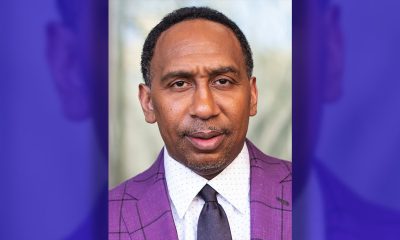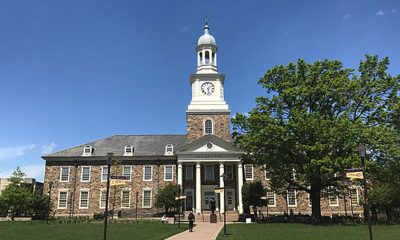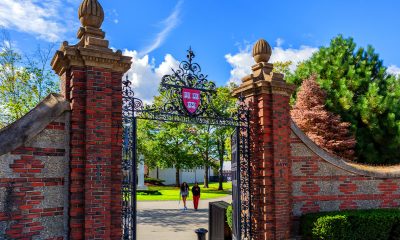Activism
Kwanzaa: Celebrating More Than 7 Principles
Some people think of Kwanzaa as an alternative to Christmas, referring to it as Black Christmas. Karenga writes that Kwanzaa is not a religious holiday, but one that is cultural “with an inherent spiritual quality. Thus, Africans of all faiths can and do celebrate Kwanzaa.” This, Karenga says, includes Muslims, Christians, Black Hebrews, Jews, Buddhists, Baháʼí, and Hindus, as well as those who follow the ancient traditions of Maat, Yoruba, Ashanti, Dogon.

By Tamara Shiloh
Millions of people worldwide participate in Kwanzaa, celebrated from December 26 to January 1. Modeled after traditional African harvest festivals, the name of this holiday was borrowed from the Swahili phrase matunda ya kwanza, meaning “first fruits.”
More than 2,000 languages are spoken in Africa. Swahili is one of its more unifying languages, spoken by millions on the continent.
Maulana Ndabezitha Karenga, activist and American professor of Africana studies, created the pan-African holiday. He did so as a way of uniting and empowering the Black community in the aftermath of the Watts Rebellion, or the Watts Riots, which broke out on Aug. 11, 1965, in Los Angeles.
Prompted by a Black man’s altercation with police, the riots lasted six days, leaving 34 dead, 1,032 injured. There were 4,000 arrests and more than 1,000 buildings destroyed, totaling $40 million in damages.
The first celebration was held in 1966. Seven children attended, each representing a letter in the word Kwanzaa, hence Karenga’s addition of the letter ‘a’ to the traditional Swahili spelling of kwanza.
Some people think of Kwanzaa as an alternative to Christmas, referring to it as Black Christmas. Karenga writes that Kwanzaa is not a religious holiday, but one that is cultural “with an inherent spiritual quality. Thus, Africans of all faiths can and do celebrate Kwanzaa.” This, Karenga says, includes Muslims, Christians, Black Hebrews, Jews, Buddhists, Baháʼí, and Hindus, as well as those who follow the ancient traditions of Maat, Yoruba, Ashanti, Dogon.
Kwanzaa, modeled after the first harvest celebrations in Africa, is rooted in African culture. However, people from all racial and ethnic backgrounds are welcome to join in the celebration of its principles.
Part of the tradition is gift-giving on the last day. Because the holiday is a celebration of spiritual qualities and not commercialization, handmade or educational gifts, such as books, puzzles, or culturally themed items, are encouraged.
Activities held throughout the week embrace five central values: ingathering, reverence, commemoration, recommitment, and celebration. From these, one of the seven principles, or nguzo saba, are celebrated each day: umoja (unity), kujichagulia (self-determination), ujima (collective work and responsibility), ujamaa (cooperative economics), nia (purpose), kuumba (creativity), and imani (faith).
The mishumaa saba (seven candles) are set in candleholder called a kinara. The candles boast the colors of the pan-African flag designed by Marcus Garvey: black for the people, red for the noble blood that unites all people of African ancestry, and green for the rich land of Africa. The lone black candle stands for unity. The three green candles represent the future, and three red candles represent the struggle out of slavery. Each night one candle on the Kinara is lit in honor of the day’s principle.
Although Kwanzaa is not widely celebrated in Africa, it is publicly acknowledged in the Caribbean as well as other cities where there are large numbers of descendants of Africans such as London, Paris, and Toronto. Such a prideful event honoring family, culture, and heritage should be reflected upon year-round.
Activism
Oakland Post: Week of November 26 – December 2, 2025
The printed Weekly Edition of the Oakland Post: Week of November 26 – December 2, 2025
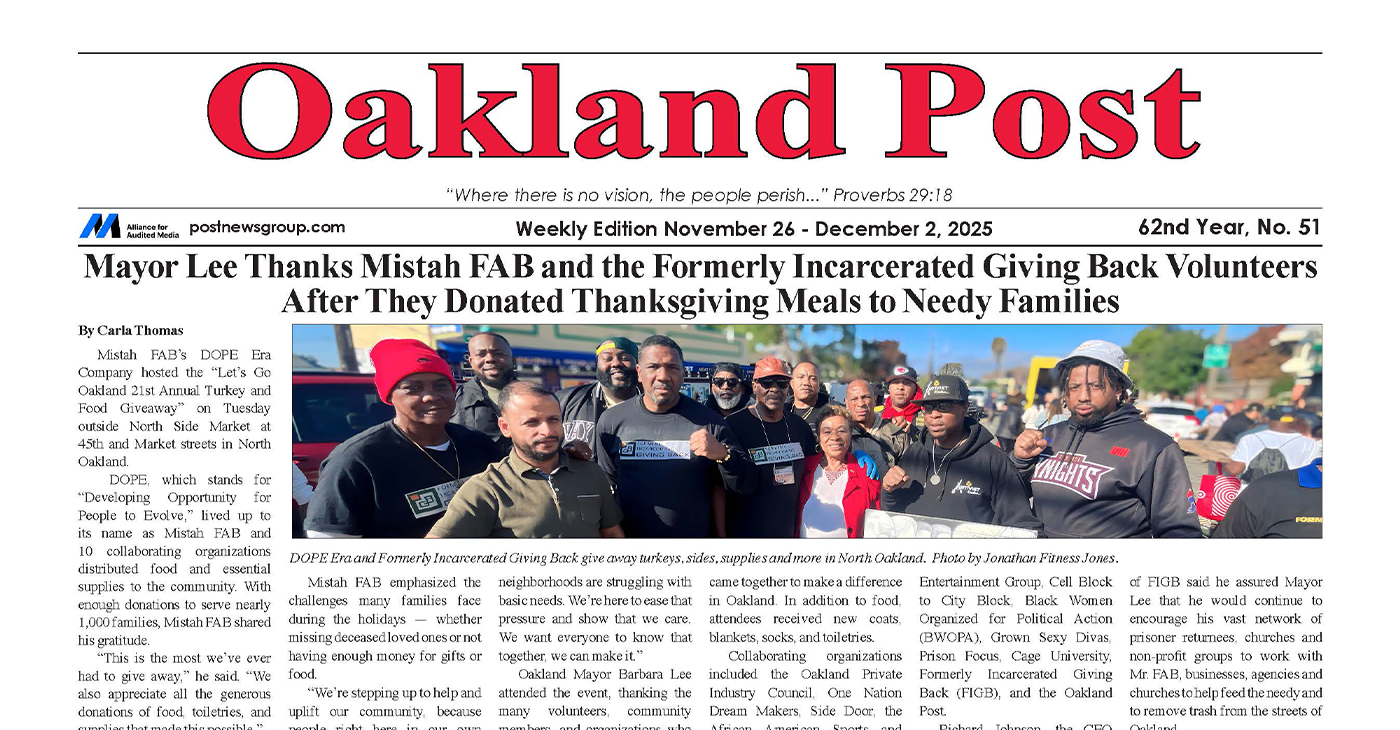
To enlarge your view of this issue, use the slider, magnifying glass icon or full page icon in the lower right corner of the browser window.
Activism
Oakland Post: Week of November 19 – 25, 2025
The printed Weekly Edition of the Oakland Post: Week of November 19 – 25, 2025
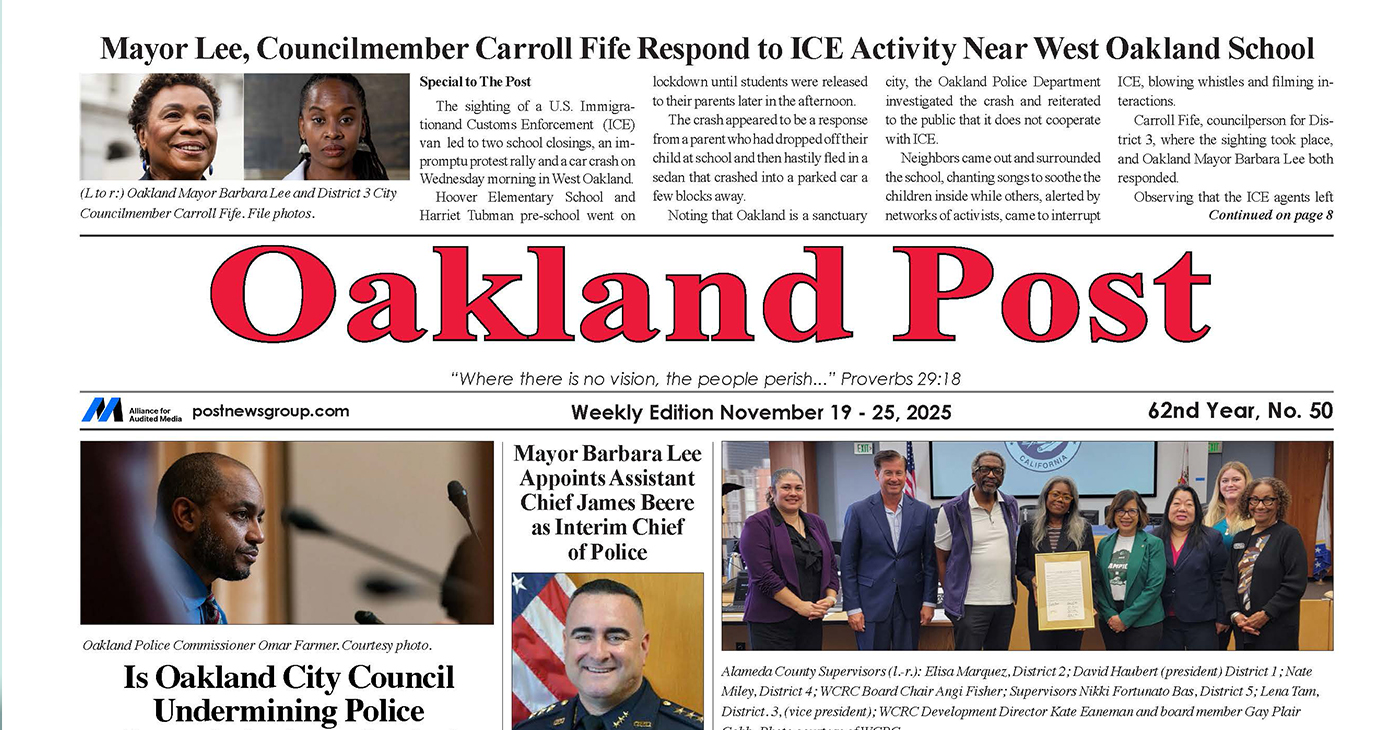
To enlarge your view of this issue, use the slider, magnifying glass icon or full page icon in the lower right corner of the browser window.
Activism
IN MEMORIAM: William ‘Bill’ Patterson, 94
Bill devoted his life to public service and education. In 1971, he became the founding director for the Peralta Community College Foundation, he also became an administrator for Oakland Parks and Recreation overseeing 23 recreation centers, the Oakland Zoo, Children’s Fairyland, Lake Merritt, and the Henry J. Kaiser Convention Center.
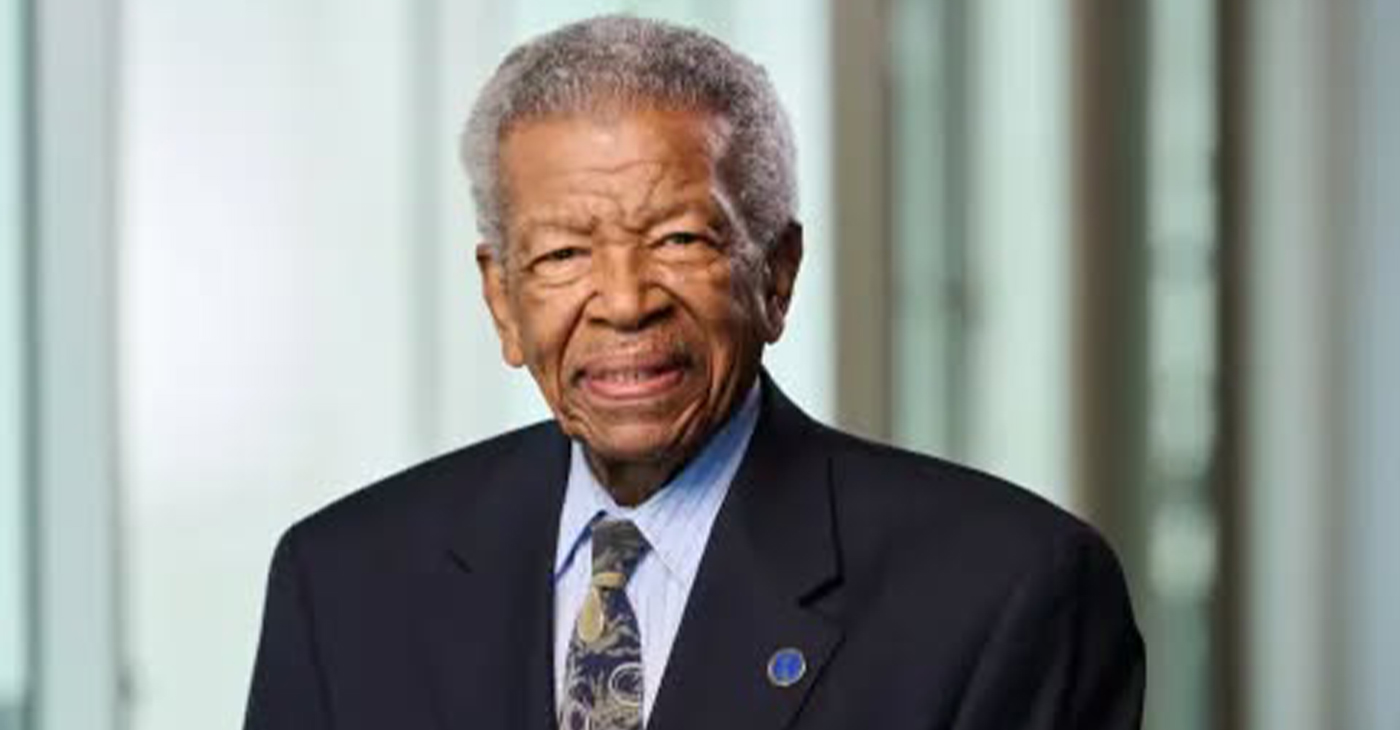
William “Bill” Patterson, 94, of Little Rock, Arkansas, passed away peacefully on October 21, 2025, at his home in Oakland, CA. He was born on May 19, 1931, to Marie Childress Patterson and William Benjamin Patterson in Little Rock, Arkansas. He graduated from Dunbar High School and traveled to Oakland, California, in 1948. William Patterson graduated from San Francisco State University, earning both graduate and undergraduate degrees. He married Euradell “Dell” Patterson in 1961. Bill lovingly took care of his wife, Dell, until she died in 2020.
Bill devoted his life to public service and education. In 1971, he became the founding director for the Peralta Community College Foundation, he also became an administrator for Oakland Parks and Recreation overseeing 23 recreation centers, the Oakland Zoo, Children’s Fairyland, Lake Merritt, and the Henry J. Kaiser Convention Center.
He served on the boards of Oakland’s Urban Strategies Council, the Oakland Public Ethics Commission, and the Oakland Workforce Development Board.
He was a three-term president of the Oakland branch of the NAACP.
Bill was initiated in the Gamma Alpha chapter of Kappa Alpha Psi Fraternity.
In 1997 Bill was appointed to the East Bay Utility District Board of Directors. William Patterson was the first African American Board President and served the board for 27 years.
Bill’s impact reached far beyond his various important and impactful positions.
Bill mentored politicians, athletes and young people. Among those he mentored and advised are legends Joe Morgan, Bill Russell, Frank Robinson, Curt Flood, and Lionel Wilson to name a few.
He is survived by his son, William David Patterson, and one sister, Sarah Ann Strickland, and a host of other family members and friends.
A celebration of life service will take place at Henry J. Kaiser Convention Center (Calvin Simmons Theater) on November 21, 2025, at 10 AM.
His services are being livestreamed at: https://www.facebook.com/events/1250167107131991/
In lieu of flowers, donations can be made to the Euradell and William Patterson scholarship fund TBA.
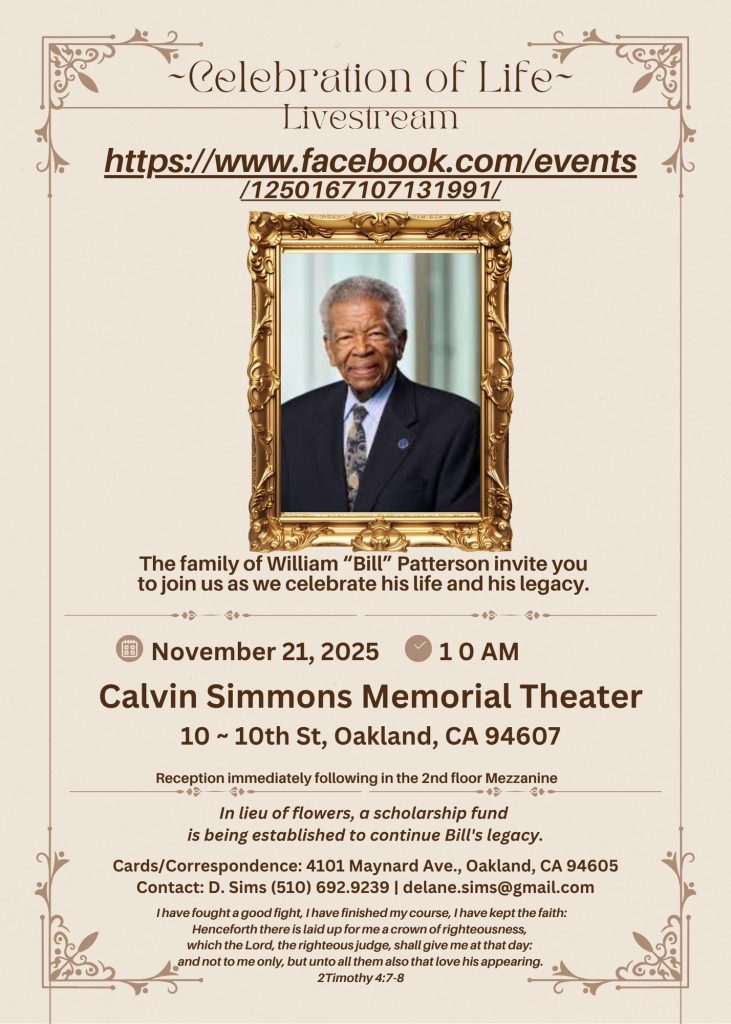
-

 Activism3 weeks ago
Activism3 weeks agoOakland Post: Week of November 12 – 18, 2025
-

 Activism4 weeks ago
Activism4 weeks agoOakland Post: Week of November 5 – 11, 2025
-

 Activism2 weeks ago
Activism2 weeks agoIN MEMORIAM: William ‘Bill’ Patterson, 94
-

 Activism3 weeks ago
Activism3 weeks agoHow Charles R. Drew University Navigated More Than $20 Million in Fed Cuts – Still Prioritizing Students and Community Health
-

 #NNPA BlackPress3 weeks ago
#NNPA BlackPress3 weeks agoThe Perfumed Hand of Hypocrisy: Trump Hosted Former Terror Suspect While America Condemns a Muslim Mayor
-

 Bay Area3 weeks ago
Bay Area3 weeks agoNo Justice in the Justice System
-

 #NNPA BlackPress3 weeks ago
#NNPA BlackPress3 weeks agoProtecting Pedophiles: The GOP’s Warped Crusade Against Its Own Lies
-

 #NNPA BlackPress4 weeks ago
#NNPA BlackPress4 weeks ago2026 Subaru Forester Wilderness Review: Everyday SUV With Extra Confidence



